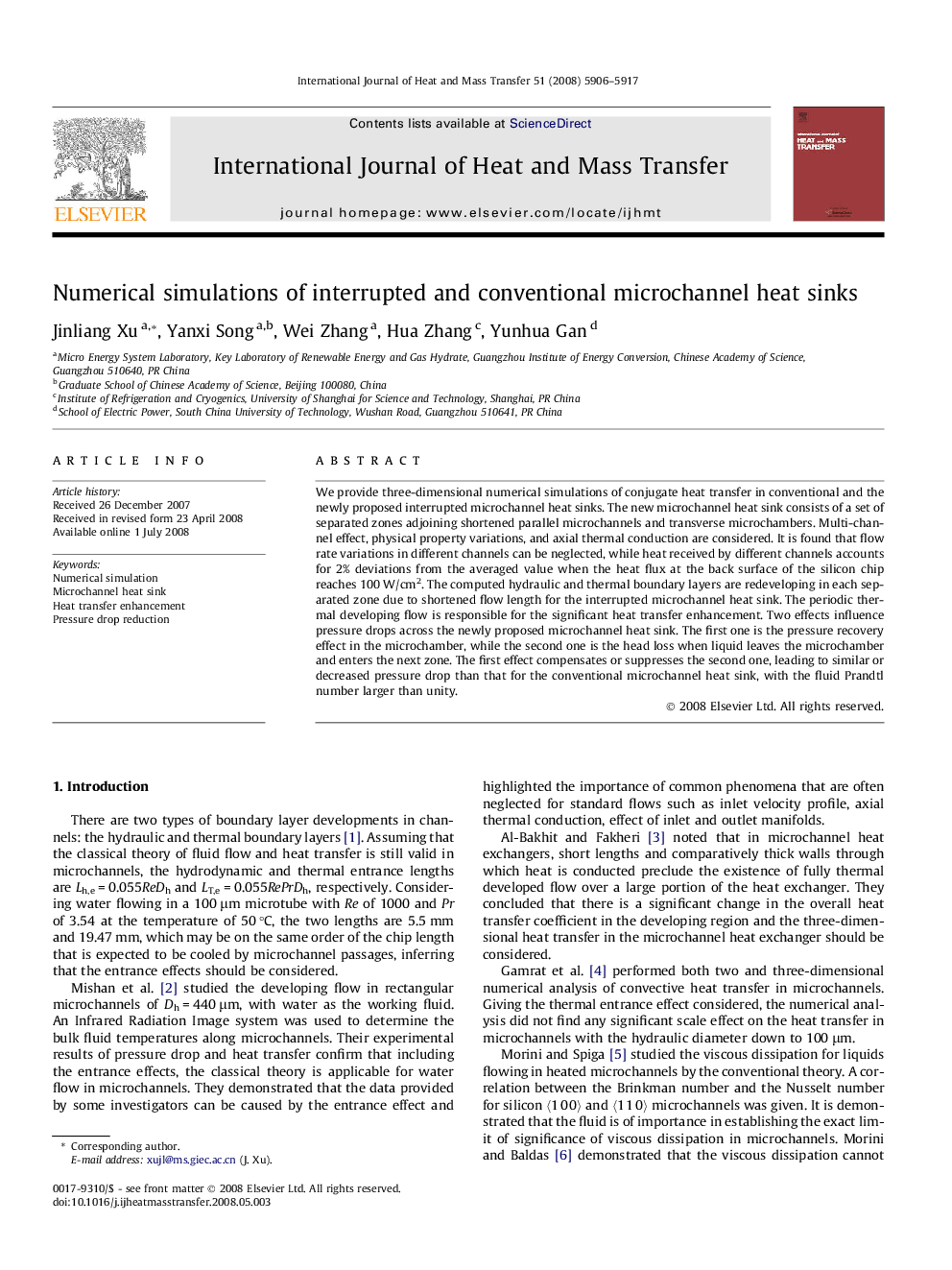| Article ID | Journal | Published Year | Pages | File Type |
|---|---|---|---|---|
| 660032 | International Journal of Heat and Mass Transfer | 2008 | 12 Pages |
Abstract
We provide three-dimensional numerical simulations of conjugate heat transfer in conventional and the newly proposed interrupted microchannel heat sinks. The new microchannel heat sink consists of a set of separated zones adjoining shortened parallel microchannels and transverse microchambers. Multi-channel effect, physical property variations, and axial thermal conduction are considered. It is found that flow rate variations in different channels can be neglected, while heat received by different channels accounts for 2% deviations from the averaged value when the heat flux at the back surface of the silicon chip reaches 100Â W/cm2. The computed hydraulic and thermal boundary layers are redeveloping in each separated zone due to shortened flow length for the interrupted microchannel heat sink. The periodic thermal developing flow is responsible for the significant heat transfer enhancement. Two effects influence pressure drops across the newly proposed microchannel heat sink. The first one is the pressure recovery effect in the microchamber, while the second one is the head loss when liquid leaves the microchamber and enters the next zone. The first effect compensates or suppresses the second one, leading to similar or decreased pressure drop than that for the conventional microchannel heat sink, with the fluid Prandtl number larger than unity.
Related Topics
Physical Sciences and Engineering
Chemical Engineering
Fluid Flow and Transfer Processes
Authors
Jinliang Xu, Yanxi Song, Wei Zhang, Hua Zhang, Yunhua Gan,
